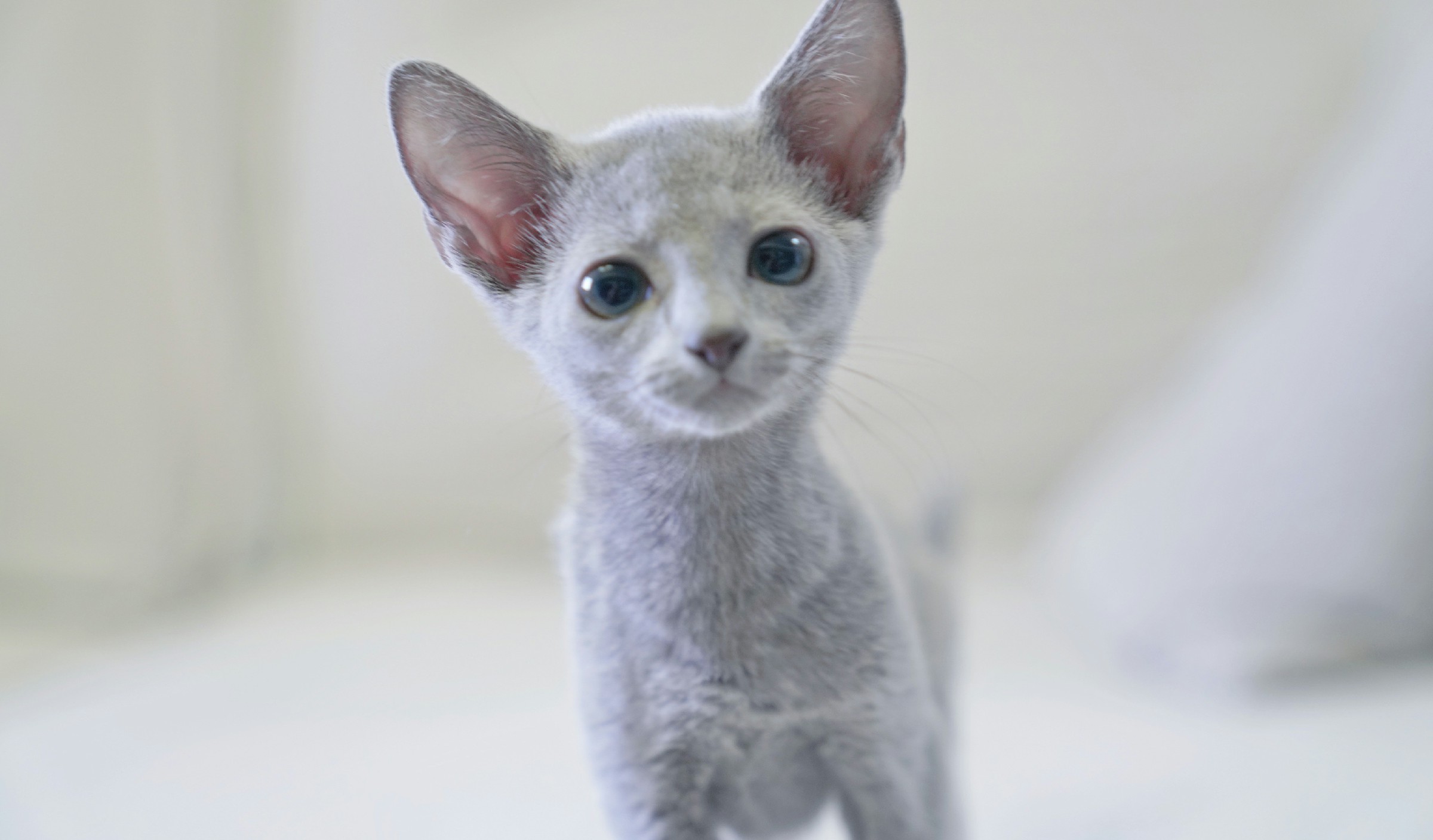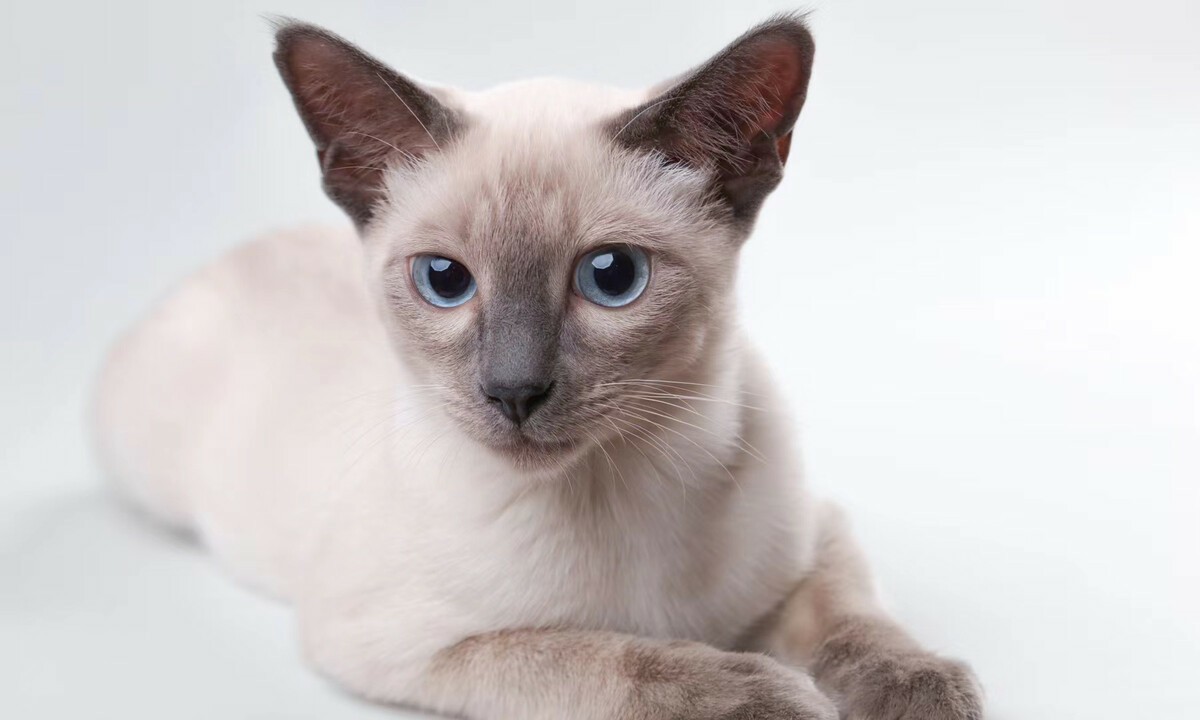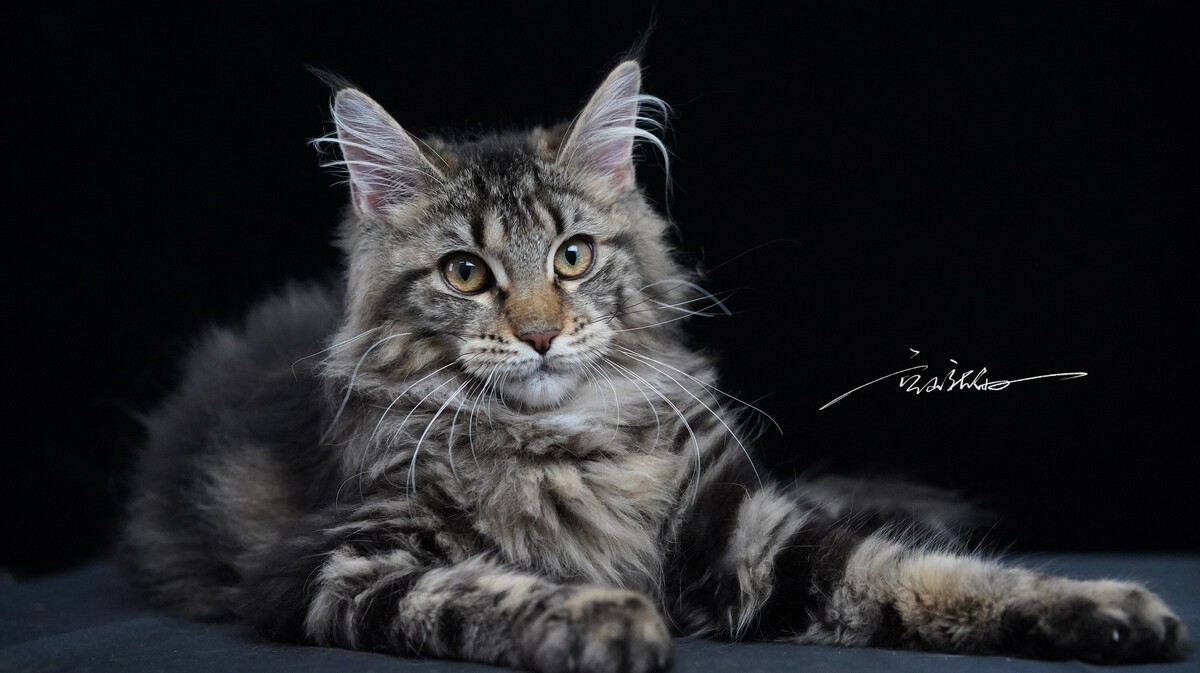Russian blue cats are famously healthy and easy to care for; like any cat, though, they do need regular grooming and maintenance to keep them in perfect shape.
Whether you’re a current Russian blue owner looking for tips on looking after your Russian blue or a prospective owner who wants to know what to expect, we have the information you need. Read on to find out more about caring for your Russian blue.
1.Brush your Russian blue regularly

Even though they’re shorthair cats, this cats need plenty of attention from their humans to be happy. Remember, this is the same breed‘s dense coat needs a good combing or brushing at least once a week. More often is better, especially during the spring when they’re moulting. They’re a low-activity breed of cat, meaning that loose hair tends to build up in their coats.
When your Russian blue cleans herself, she licks up all this loose hair and ingests it. This can cause hairballs and other problems. A thorough brushing or combing can reduce the incidence of hairballs and also helps distribute natural oils through your Russian blue’s coat. I like a metal shedding comb for my cats; other people prefer rubber brushes, brush mitts or a pet vacuum.
2.Clip your Russian blue’s claws every 10-14 days
At least once a fortnight and preferably every ten days, give your Russian blue a little mani/pedi. Cat’s claws can become ingrown if this is not done; clipping her claws will also make them less sharp, meaning that any scratching is less damaging. Be very careful when you do this — only ever clip away the very tip of the claw. Do one paw at a time and give your Russian blue a break between each one.
You will make more progress if you accustom your pet to the Clippers first. Leave them out in the locations she likes to frequent: by her food bowl, for instance, or on her favourite chair. Let her sniff and lick them; give her a reward and praise when she does. You can help her get used to the sound of the clippers by snipping pieces of dry spaghetti near her. Make sure she’s comfortable before moving onto her claws.
3.Brush your Russian blue’s teeth frequently
All cats are prone to develop cavities and gum disease if their teeth aren’t brushed. Russian blues seem to need more attention in this regard; I’m not sure why, but they seem just a little more prone to gingivitis and dental caries than other cats. I would recommend at least a weekly brushing, although every three days is better. Some cats take more readily to tooth-brushing than others. Most of mine have at least permitted their teeth to be cared for, while some actively enjoyed the process and would eagerly participate.
Meat-flavoured toothpaste can go a long way towards winning a reluctant feline over to the procedure — place a dab of paste on the brush and let her lick it off to accustom her to the utensil. If this doesn’t work, you might get a bit further with a fingertip brush. These allow you to pry the cat’s mouth open and brush at the same time. If that doesn’t work, wrapping your finger in a clean cloth with a dab of pet toothpaste and wiping your Russian blue’s teeth is better than nothing. A pet groomer can often be helpful in the matter of tooth-brushing if your Russian blue really won’t cooperate. You might also ask your vet for some pointers — they know all about persuading cats to allow necessary procedures.
4.Play chasing games with your Russian blue
This low-activity breed can develop health problems associated with a sedentary lifestyle. your Russian blue can start to struggle with high blood pressure, joint problems, weight gain and other issues. Fortunately, there’s another instinct that can overwhelm the urge to nap: your Russian blue’s prey response. Your Russian blue is the descendant of generations of champion mousers and the desire to hunt is never too far below the surface.
Motorised toys she can chase are a good option. I also like fishing-pole teaser toys — those allow you to give your Russian blue a workout without having to run around yourself.
5.Choose a high-quality cat food
Your Russian blue cannot thrive without proper nutrition. Choose a premium cat food with a high protein content. Don’t skimp and offer cheap food; you should also avoid foods formulated for dogs. Read the ingredients and make sure you know what the food contains. Meat ingredients should be named and there should be no vegetable fillers. your Russian blue requires a range of vitamins, minerals and amino acids. In particular, your Russian blue will require a food that’s high in taurine — this is absolutely crucial for your Russian blue’s wellbeing. If you’re unsure, you can approach your vet for advice on a good brand.
Personally, I prefer to avoid dry foods, except in small quantities as treats or rewards. Cats often don’t drink enough fluid and with dry rather than wet food they can end up spending their days in a state of mild dehydration. If this goes on, problems with the urinary tract and kidneys can be the result.
6.Provide a pet water fountain to encourage your Russian blue to drink more water
One way to help avert those renal and UT issues is to supply your Russian blue with a water fountain. Some cats have a tendency to turn their nose up at their water-dishes until overmastered by thirst, which isn’t healthy. There may be various reasons for this; many cats don’t like drinking from a still water-source and are happier drinking from the tap. For this reason, I strongly recommend getting a water fountain. Choose a model with a pump to provide a stream of free-running water rather than a simple gravity-fed waterer. This encourages cats to drink more and makes them feel more confident in their water source.
Other features you need to look for are ease of cleaning (there should be no closed sections which can’t be cleaned, as mould and bacteria can set up shop in these and contaminate your pet’s water) and anti-microbial plastic. You should also look for a fountain that contains a built-in water filter (this should also be replaceable).
I like fountains with different pump speeds so you can find one that’s comfortable for your pet. There are both battery and mains models; I have a mains-powered fountain but a battery-powered model might be better if you need to move the bowl around a lot. Placing the water source too close to the food dish can trigger an atavistic association between discarded prey and polluted water, making your Russian blue reluctant to drink.
7.Moderate your Russian blue’s food intake.
While kittens and younger Russian blues can be fed fairly freely, I would strongly recommend switching to a portion-controlled diet after the first year. Kittens need lots of nourishment because they’re growing so fast and are very active.
Adult cats are fine with two meals a day. Keep treats small, infrequent and lower-calorie. You should also avoid letting your Russian blue eat human food; not only does this increase the total amount of food consumed by your Russian blue but it may be very bad for her.
Many of the foods we eat every day are unhealthy or actively toxic to cats, including onions and garlic. I generally feed my cats one pouch of good-quality wet food in the morning and one in the evening. If your pet persistently fusses and begs for food, read on for some tips on how to help manage that notorious Russian blue appetite.
8.Use puzzle toys to manage your Russian blue’s food cravings.
Eating is fun for cats and they tend to do a lot of it, even when they’re not actually hungry in the physical sense. If your Russian blue plagues you for snacks between meals, you can help slow down their food consumption and persuade them to exercise at the same time with puzzle toys. These fall into various categories.
There are balls your Russian blue can roll around and chase to release a small piece of dry food and puzzles where your Russian blue must push a piece of food through a little maze to get it out.
Russian blues are very clever; while their intellect doesn’t lead them into mischief like some breeds, they benefit a great deal from exercising their minds as well as their bodies.
9.Teach your Russian blue games and tricks.

Because they’re smart and very trainable, Russian blues often love learning games. Teaching kitty to play fetch is a good one — not only is it fun and entertaining for the cat, she’ll be getting exercise. It’s also an impressive party trick. Other useful skills you can teach your Russian blue include coming when you call her name or walking on a lead.
10.Keep up to date with shots and checkups
When you first bring your Russian blue home, it’s a good idea to get her checked out by a vet. If you bought a kitten from a breeder, the breeder should have taken care of things like spaying, vaccinations and any other health interventions required in the first 12 weeks or so, providing you with a comprehensive overview of your new cat’s state of health.
That said, however, a once-over by your own vet will pick up anything the original vet may have missed. Your vet can also help with any questions you may have about looking after your Russian blue. After this initial visit, you should take your Russian blue for a checkup at least twice a year.
Besides keeping your pet up to date on her vaccines and worming schedule, these biannual visits allow your vet to check for health issues. Russian blues are very healthy, long-lived kitties but they do have one or two potential issues, especially a heart disorder called hypertrophic cardiomyopathy. This condition can be managed with diet and medication but it needs to be caught early.
11.Upsize your Russian blue’s litter tray.
Russian blue cats are designated a medium to large breed. They generally get pretty big. You will need to upsize any equipment for your Russian blue accordingly. Litter trays are a pet peeve of mine: the ones sold in pet stores are simply never big enough.
Your Russian blue needs a litter tray with a width equal to the cat’s length. The length of the tray should be your Russian blue’s length plus 50 per cent. You will search in vain for a tray of these dimensions in your corner pet store. Instead, I use a large plastic storage box with one side cut down to let the cat enter and exit.
The best thing about these boxes is that they have high walls and can be covered with a lid, giving shyer cats a more private space. Small litter trays can encourage your Russian blue to hold it in rather than using the uncomfortable tray, which can predispose them to infections, constipation and other issues.
Be sure to clean your Russian blue’s tray frequently. Russian blues are very fastidious about this sort of thing. They will object to an uncleaned tray and may take their business elsewhere if you don’t change their litter at least every couple of days. If you’re finding messes elsewhere, try cleaning the litter tray more frequently.
12.Upsize your Russian blue’s play equipment
Your Russian blue is a heavy cat, especially if you have a tom, and will probably only get heavier over the years. Keep this in mind when you’re choosing play equipment such as a scratching post or cat tree.
Everything needs to be scaled up and a little more solid than you might choose for a small or medium cat. In the next few sections, we’ll discuss the kinds of equipment you might want and how to choose the correct size for your Russian blue.
13.Provide your Russian blue with a cat tree
I strongly recommend getting your Russian blues a cat tree and encouraging them to use it. Cat trees provide exercise and mental stimulation, preventing your Russian blue from becoming too lazy and giving them a convenient belvedere from which to supervise the household’s activities.
If the nice sturdy tree you’ve provided gets ignored, you can encourage them to use it by placing attractive toys or small food treats on the upper platforms. A cat tree is especially useful if you have dogs or small children around, as they allow your Russian blue to get out of the way if things become too intense at floor level.
14.Provide your Russian blue with a scratching post
Because these calm, non-destructive cats don’t generally scratch up items around the home, some owners assume that a Russian blue doesn’t need a scratching post. All cats can benefit from a scratching post. This is especially true of Russian blues because of their lower activity levels. They don’t always run, walk or climb around enough to wear their claws down. As well as scratching to mark their territory (or to annoy you) cats also have a physiological need to scratch. As a cat’s claws grow in, older claw tips (sheaths) are pushed aside by the growth of new claws. Scratching pulls the old claw sheaths away and allows the new claws to come through.
Scratching also allows your Russian blue to stretch properly and provides much-needed exercise The ideal scratching post should offer different angles — horizontal scratching posts encourage your Russian blue to work out her back legs and claws, while vertical posts allow her to latch onto the material of the post and drag downwards. The length or height should be at least fifty per cent longer than your Russian blue’s length from her nose to the base of her tail. The post should also be fairly heavy so that your Russian blue doesn’t push or pull it over.
15.Keep your Russian blue indoors

I generally recommend keeping all cats indoors, unless you have working cats on a farm or smallholding. With Russian blues, there are a number of reasons to keep them indoors. First of all, there are the risks that apply to any cat: running into traffic, being attacked by other animals (foxes, dogs, other cats), picking up fleas and ticks, eating prey with infectious conditions, and — sadly — attacks by humans who may try to harm them.
Unfortunately, some people think it’s funny to set out poisoned food or simply catch and kill cats. As a pedigree cat, your Russian blues is especially prone to theft. This breed is very desirable and people may be tempted to steal your pet to sell her. Then there’s the matter of the impact a Russian blue can have on the local wildlife: as mentioned previously, this breed has a very strong prey response and produces some very skilled mousers. They can put a serious dent in the songbird population if they’re allowed to roam.
If your Russian blue pines for the great outdoors, a roofed enclosure in the back garden may be a solution. Because these cats are very trainable, you can usually get them to take a harness (if you introduce them to it properly). This will allow you to take your Russian blue out for walks on a lead.




